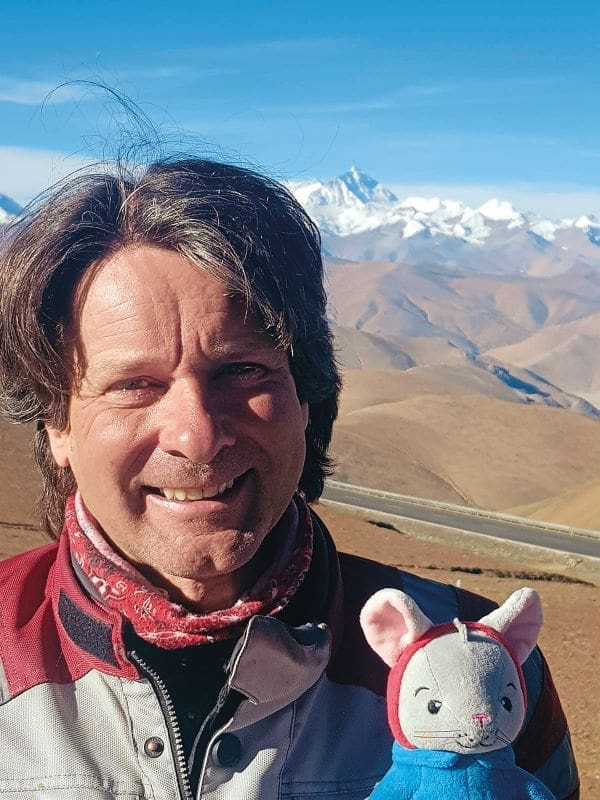We left Richard Barr in Turkmenistan – did he make it to Everest base camp?
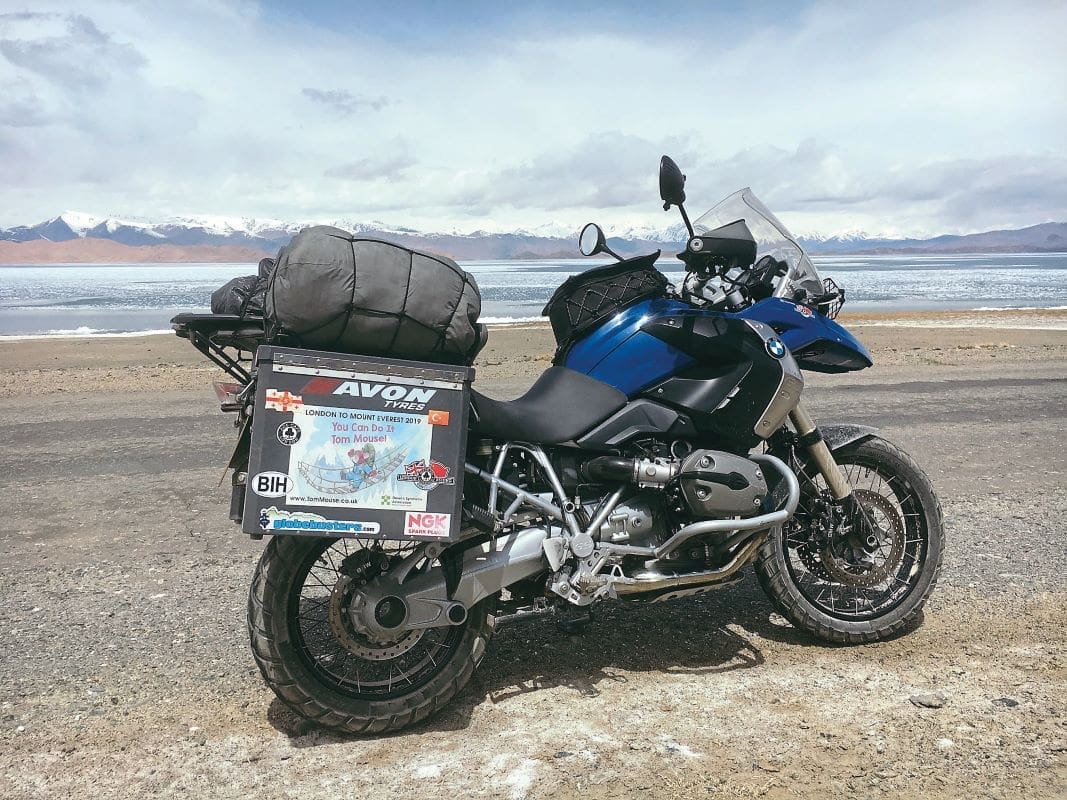
WORDS & PHOTOGRAPHY: Richard Barr
Crossing into Uzbekistan, it immediately felt more open, the people more welcoming and engaging than the at times stifling Turkmenistan. Currency exchange in Uzbekistan was fun with approximately 10,000 Som to the pound. The bill for one team meal (admittedly, we are a big team of riders) came to a hefty 3.5 million Som, (about £350), paid for with a very large block of new Uzbek notes.
Enjoy everything MSL by reading the monthly magazine, Subscribe here.

We rode through Khiva, Bukhara and Samarkand, spending a day in each. These progressively larger and more significant cities along the ancient Silk Route all had an impressive range of mosques and madrasahs. Their construction appeared to have been as much about establishing the position and legacy of wealthy noblemen as it was about homage to Allah and the Islamic religion. In Khiva, three of us rode off to find a jet wash to clean our bikes, and found a place run by a local family. They also ran a restaurant, and treated us to a wonderful spread of local foods whilst our motorcycles were blasted to cleanliness. I am still in contact with this family through social media, which is relatively open in Uzbekistan.
The ride from Khiva to Bukhara was some 250 miles across the Qimiraqqum Desert (Red Desert), with temperatures of up to 35 degrees C. For a while the road was excellent, concrete dual carriageway sweeping across endless desert; then suddenly it ended and it was dust and rubble for over a third of the journey.

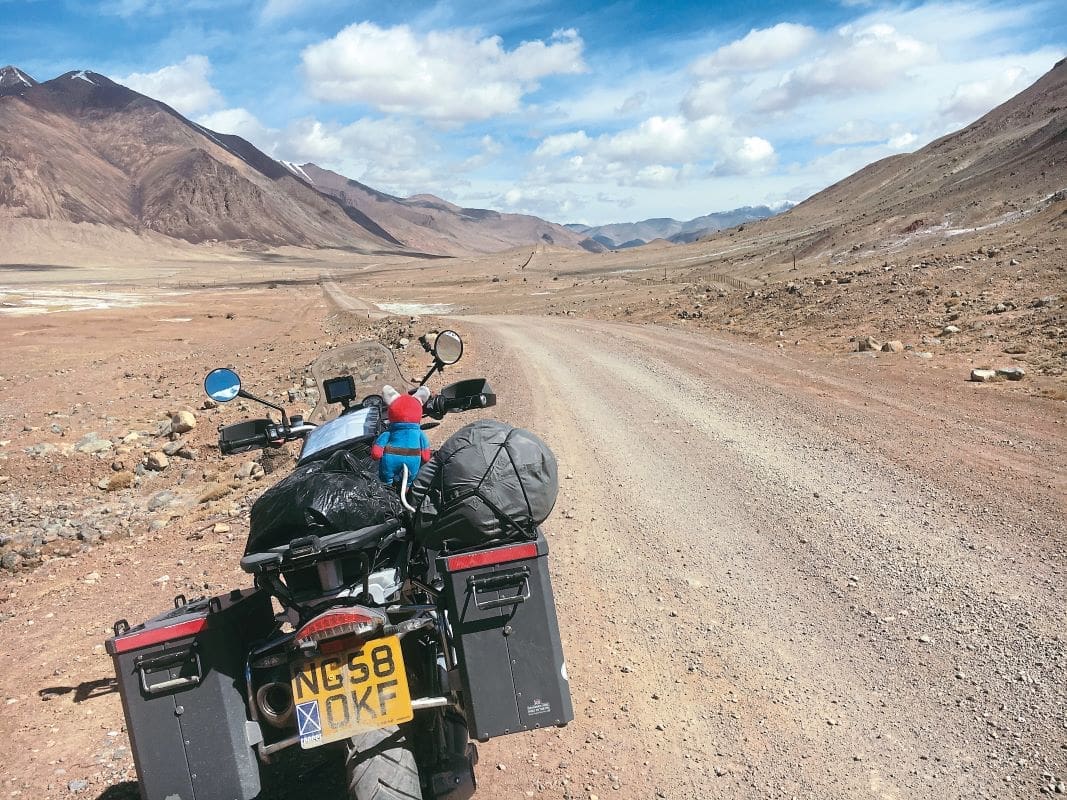
Another ‘Stan
On Day 37 we entered Tajikistan, a country of spectacular mountains, but largely barren. It appeared to be much poorer than its neighbour Uzbekistan, but as we were coming to expect, the people were very welcoming. Many put their right hand on their heart as they acknowledged you, and I found this simple, warm, personal action very moving.
Young and old were very interested in us – a small girl sat on my GS to have her picture taken, and went away with a Tom Mouse sticker. A policeman allowed me to sit on his bike.
The next stop was Dushanbe, the capital of Tajikistan. In order to get there we had to go through the neatly named ‘Tunnel of Death’. It’s an apt name. The tunnel is a three-mile fume-filled two-lane passageway whose lighting ends after the first few hundred metres. It was snowing when we entered the tunnel and when we finally popped out the other side the next challenge was a long downhill stretch. Clearly challenging too for the large lorries, one of which was on its side in a ditch.
Running alongside the Panj river which forms part of the border with Afghanistan, we shared the rough road with large articulated trucks and speeding 4x4s. This border is truly fascinating given its recent history, and has fantastic scenery thrown in. Snow-peaked mountains reached over 5000m in height. Afghan people on the track (on their side of the border) occasionally reciprocated our enthusiastic waves from the Tajikistan side.



We faced more challenging roads including deep sand and gravel in the amazing Wakhan Valley and parts of the notorious Pamir Highway, surrounded by the spectacular Pamir Mountains. Highlights included Yamchun Fort, a home stay at Layangar, endless amazing scenery, travelling alongside the Chinese border and, of course, the welcoming and friendly people of Tajikistan. It’s a country of big mountains, big skies, and people with big hearts.
It was Day 44 as we headed over yet another high mountain pass, the 4655m Akbaytal Pass, with predictably poor roads, and entered our penultimate ’Stan – Kyrgyzstan. A country of rolling green, leading to stark, barren snow-capped mountains, with horses a new feature alongside with the ever-present goats, donkeys, sheep and cattle.
We crossed into Kazakhstan, the 18th country of our adventure, and actually the ninth largest nation in the world, yet with a population of less than 19 million. Almaty is its biggest city, with a population of over 1.7 million. It has a very modern feel, and a new underground system modelled on Moscow’s iconic Metro. The scale is a bit smaller though, with only a single line and some nine stations.
We crossed over the border again back into Kyrgyzstan, skirting the magnificent Issyk Kul Lake (the world’s tenth largest lake by volume and at over 2000 feet the seventh deepest), and on to the border town of Narin to prepare for our crossing into China.

Security Conscious
The mountain road linking Kyrgyzstan to China’s autonomous region of Xinjiang was the most beautiful and spectacular approach I have ever experienced from one country to another. It also presented us with flurries of snow and freezing temperatures, adding to the dramatic entry. It was also the final country of our trip, maybe the most significant and certainly not the easiest to get into.
Arrival at the Chinese border in the mountains started a three-day process. It wasn’t always clear what was happening, but it was extremely thorough, underlining that this fast developing country is highly sensitive. We sat on our bikes as we were sprayed with a disinfectant. Then the bikes – all of them at one go – were X-rayed in a machine designed for trucks. We were allowed to stay in a hotel in the regional capital of Kashgar, some 40 miles from the border, whilst our entry requests were being processed.
A few days later we were finally each equipped with a Chinese driving licence and a new numberplate, (although this only needed to be carried, not fixed to the bike). A mistake had been made with my Chinese driving licence, declaring that I was a woman. There was no time to correct it and I hoped it wouldn’t cause any issues or require my having surgery in central China.
Unlike many of the ’Stans, where security was evident but relatively covert, entry into western China provided a highly visible display of strength and control. All photography was strictly prohibited as we approached and crossed the border. There were security and speed cameras at frequent intervals on the road stretching for tens of miles, with regular checkpoints equipped with scanners and armed police. All public buildings, including schools and petrol stations, had barricades, many with armed guards. It appeared that the biggest employer in the region was the police force, and that the largest industry was the razor wire business.
I had expected the city to be heaving with bicycles, but instead there were hundreds of electric scooters. I spent some time photographing the huge variety of machines and their pilots silently whizzing along the designated lanes of the city’s streets. Like the whole country, the scooters were going places, and fast.

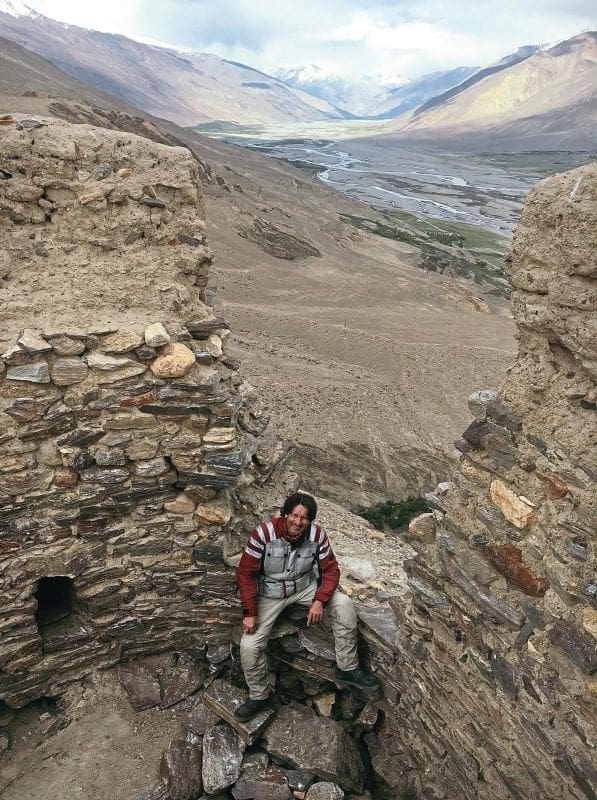
As I waited at our hotel in Kashgar, I realised how privileged I was to witness just everyday life in China. The ancient Muslim quarter was beautiful but strangely quiet, with a mix of shops opening on to the street, including a dentist! A joyous wedding took place at the hotel, and a series of pageants was being conducted. As ever, we were in demand for impromptu photoshoots with eager locals and Chinese tourists alike.
We were given a police escort out of the city, on our way towards Tibet and Mount Everest (Mt Qomolangma). It was a long, long section, riding the Tibetan plateau, much of it over 4000m, and sometimes above 5000m as we traversed many snowy high mountain passes.
We stopped near the religiously significant Mount Kailash (over 6600m). The mountain and the nearby Lake Manasarovar (one of the highest freshwater lakes in the world at over 4500m) are pilgrimage destinations for four religions – Buddhism, Jainism, Bon and Hinduism. Four major Central Asian rivers have their source in the area: the Brahmaputra, the Indus, the Sutlej and the Ghaghara (a major tributary of the Ganges).
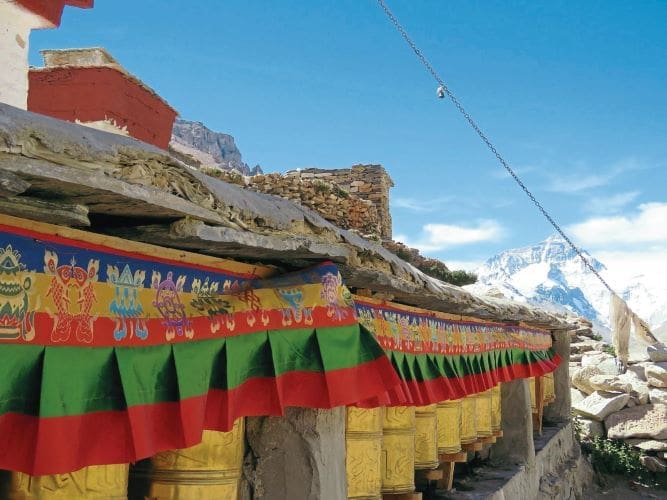

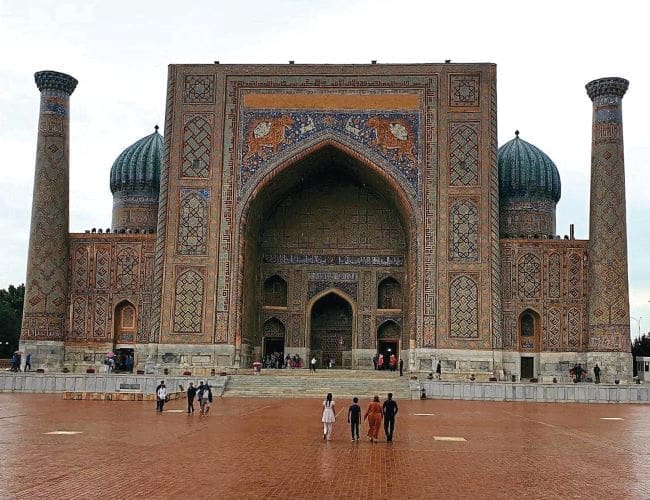
Ten weeks after leaving London, we rode up the final spectacular twisting road to Mount Everest Base Camp, trying to absorb the fantastic views in the hot, bright sun. After travelling 10,000 miles from the Ace Cafe, through 19 countries, in some ten weeks, I had made it. For a moment, I was one of the highest motorcyclists in the world. Tom Mouse of course, my faithful companion, was the highest mouse!
Epilogue
My fellow riders carried on for a further 3000 miles and three weeks, from Lhasa to Beijing. But for me, reaching Mount Everest was my target, and as planned I took the two-day train journey from Lhasa to Beijing. This was an amazing adventure in itself, being one of only two non-Chinese out of over 1000 people on a train of 17 carriages.
I shared a four-bed compartment with three Chinese – two guys and a girl. All of the people I met on the train were very friendly and as interested in me as I was in them. Many spoke good English – it is compulsory to learn English in China’s schools – but when I had to communicate in Chinese I used the Google Translate app, which was great fun.


After a few days of sightseeing in the capital I flew back to the UK. Meanwhile, my GS was taken by truck to join the other bikes in a container to be shipped home. Two months later at a warehouse near Heathrow, we were reunited.
That Chinese train journey gave me time to reflect on the last two-and-a-half months. I had ridden some amazing and challenging roads, through extremes of weather, building friendships with a fantastic group of fellow adventurers along the way.
The professionalism of Globebusters was second-to-none, and I was always grateful to my many individual and corporate supporters, such as Avon Tyres and NGK Spark Plugs, who all helped to raise funds for the Down’s Syndrome Association and for Woolgrove School, Special Needs Academy.

I had been so lucky to experience such a wealth of places, cultures and people. It reinforced my view that we all have more in common than make us different, and it was a privilege to be able to complete such an epic adventure. Just like trips out on my Honda SS50 had done for me over 40 years earlier, riding a motorcycle amplifies and intensifies any journey. There were, of course, significant hardships, including falling off five times (into deep sand or mud – I sampled both). But my recollections are more of the joy, the people, and the sense of achievement rather than the hardships – I enjoyed every minute of it.
Richard’s next challenge was to cycle 100 miles, visiting children’s hospitals in and around London – he did it in a day…
Raising Funds
Richard made this trip to raise funds for the Downs Syndrome Association and for Woolgrove School, Special Needs Academy, in memory of his son Tom, who had Downs and died aged seven.
A short video of the adventure can be found on the Tom Mouse website www.TomMouse.co.uk
Donations to either charity can be made through www.ChallengePictures.co.uk
Richard pays for all of his own costs and therefore all monies from donations go to the charities.
